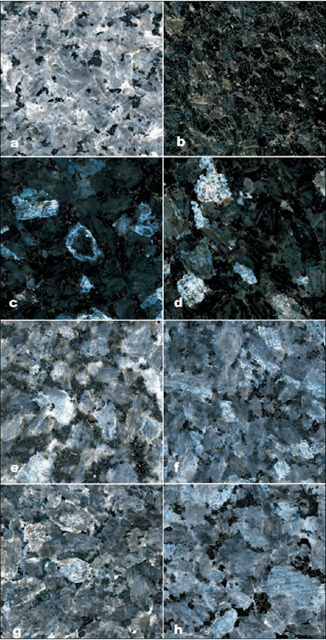The facade of this outlet is made from larvikite. Walking past the building you will notice the stone shimmering and shining. This is labradorescence - a subtype of the Schiller effect. If you look even closer, you will see that the minerals of the stones are different as well!
Earthcache Lesson: Mineralogy and Composition of Larvikite
Igneous Rocks
Igneous rocks are one of the 3 main categories of rocks, the other 2 being sedimentary and metamorphic. Igneous rocks are magmatic in origin: formed through the cooling and solidification of magma or lava.

Formation of igneous rocks (Source: Wikimedia Commons)
Intrusions of larvikite in Norway form part of the suite of igneous rocks that were emplaced during the Permian period, associated with the formation of the Oslo Rift. The crystallisation of a ternary feldspar indicates that this rock began to crystallise under lower crustal conditions.
Intrusive vs Extrusive
Intrusive rocks are rocks that cool down and crystallises underground. This results in a slowler and steady cooling process, which causes the crystalline structures of the rock the be larger. These rocks are usually coarse grained, or in geological terms, these rocks are phaneritic.
Extrusive rocks are the opposite, magma flows out and cools above ground, causing the magma the cool and crystallise faster. This causes the crystals to be smaller and fine-grained. In other words, the rock is aphanetic.
Felsic vs Mafic
Felsic is a portmanteau of feldspar and silica, the 2 minerals that are predominant in igneous rocks of this type, with silica being found in the form of quartz. These rocks are generally lighter in colour.
Mafic on the other hand, is a combination of magnesium and ferric, ferric being the latin term for iron (Fe). These rocks are usually darker in colour.
Larvikite
Larvikite is generally found in Norway, in the vicinity of the town of Larvik, where the rock gets it's name from. It is a variety of monzonite, which is composed of approximately equal amounts of plagioclase and alkali feldspar, with less than 5% quartz by weight. Larvikite is usually rich in titanium, which is found in the forms of titanaugite or titanomagnetite, the latter of which is a highly magnetic ore.
An interesting thing to note is that the feldspar crystals in larvikite are ternary: it contains significant amounts of all three endmembers of the feldspar group - potassium feldspar, anorthite and albite
The larvikite used here shows a neon blue reflection, termed "labradorescence" due to the presence of perthite, an intergrowth of 2 feldspars - in this case, plagioclase and alkali feldspar. This would usually be marketed as "Blue Pearl Granite" although it is not a granite.

Variety of larvikites (Source: Research Gate)
The above picture depicts the various kinds of larvikite.
- (a) Kjerringvik
- (b) Bergan
- (c) Klåstad strong blue (Emerald Pearl)
- (d) Klåstad silvery to light blue
- (e) Stålaker (Marina Pearl)
- (f ) Tvedalen (Blue Pearl)
- (g) Bassebu
- (h) Malerød (Royal Blue).
Logging Tasks
Send the answers to the following questions via my profile, and log. I will get back to you if there are problems with your answers.
The storefront is red and is beside an arch. Check the hints for the name of the shop.
- Is the rock intrusive or extrusive? Explain and describe the crystal size.
- Is the rock felsic or mafic? Explain
- What is causing the stone to reflect light? Name the 2 components as well.
- What is the name of said phenomenon?
- Based on the image above, which larvikites are present in this building material?
- Note the difference in coloration between the two stones. Can you make an inference as to why this is the case?